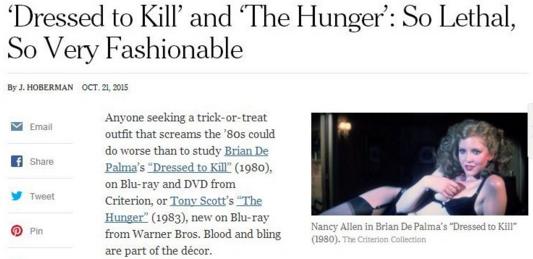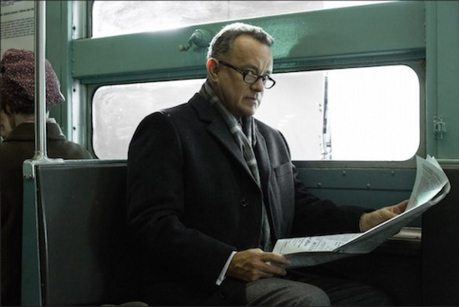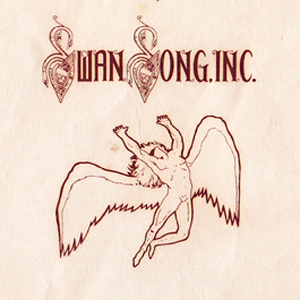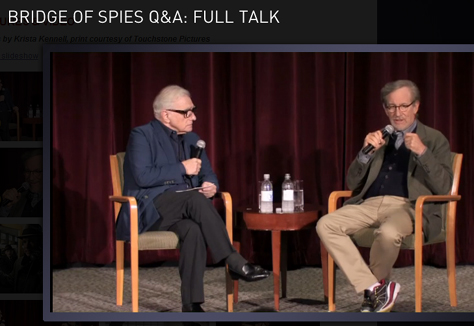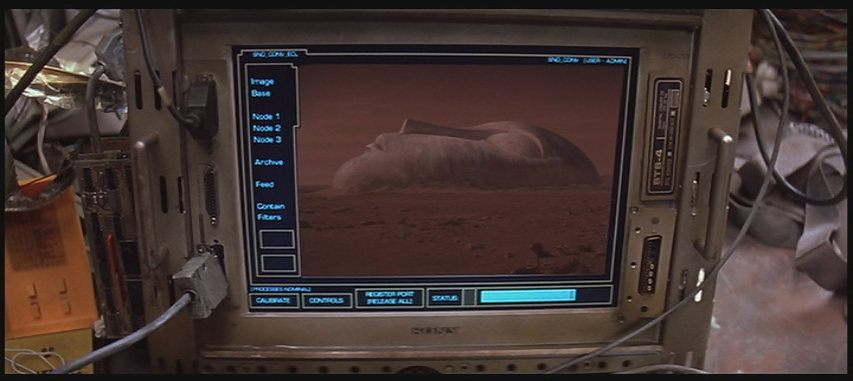WITH MENTION OF CHRIS DUMAS' 'UN-AMERICAN PSYCHO'
Last week in the New York Times DVD column, J. Hoberman discussed Dressed To Kill, and mentioned Chris Dumas' Un-American Psycho in the process. Here's an excerpt:
---------------------------------------------------------------------------------------
"Anyone seeking a trick-or-treat outfit that screams the ’80s could do worse than to study Brian De Palma’s Dressed to Kill (1980), on Blu-ray and DVD from Criterion, or Tony Scott’s The Hunger (1983), new on Blu-ray from Warner Bros. Blood and bling are part of the décor.
"Both are erotic horror films that flaunt their style and flirt with soft-core pornography. There is nudity, but costumes are de rigueur: Mr. De Palma’s monster is a razor-wielding cross-dresser, while Mr. Scott’s ultra-modish vampire couple (Catherine Deneuve and David Bowie), bloodsuckers who slash rather than bite, are shown several times to good advantage in 18th-century garb.
"Both movies employ lushly saccharine music, unfold in a scarily indifferent Manhattan and are enlivened by aggressively vulgar New York City police detectives. If Dennis Franz in Dressed to Kill is a far funnier embodiment of the reality principle than Dan Hedaya in The Hunger, it is because Mr. De Palma’s movie is a vastly richer, more entertaining movie than The Hunger — and also, for all the accusations leveled at Mr. De Palma of being a Hitchcock copycat, a more original one as well.
"However blatant its Psycho references (or parodies), Dressed to Kill owes as much to Luis Buñuel, another De Palma influence, as to Alfred Hitchcock. (Mr. De Palma borrowed the beyond-the-grave grab in Carrie from Los Olvidados; less obvious points of contact in Dressed to Kill include Belle de Jour and The Discreet Charm of the Bourgeoisie.) As befits a semi-Surrealist work, Mr. De Palma’s movie is framed by two reveries imagined in the same bed — one a lascivious daydream, the other a scary nightmare — and is fraught with Freudian angles.
"The nominal protagonist, a frustrated suburban housewife (Angie Dickinson), fantasizes about steamy sex, playfully teases her adolescent son (Keith Gordon), complains to her well-to-do psychoanalyst (Michael Caine), and then, in the movie’s most extravagantly orchestrated set piece (an almost silent sequence with the camera in nearly constant motion), allows herself to be picked up by a mysterious stranger at the Metropolitan Museum of Art. That the scene ends with a couple having relations in the back seat of a cab heading down Fifth Avenue is the signal for further, darker adventures.
"Full of logical inconsistencies, Dressed to Kill is best appreciated as a series of intersecting fantasies — those of the homemaker, her shrink, her son and the director, who cast his wife at the time (Nancy Allen) as a savvy call girl variously serving as surrogate mom, big sister and dream girlfriend for Mr. Gordon’s quasi-autobiographical character. (De Palma, a documentary portrait of the director, recently shown at the New York Film Festival, suggests that the scene in which, armed with a hidden camera, the boy stakes out the analyst’s office is based on an episode from Mr. De Palma’s past.)
"Mr. De Palma has made more coherent movies than Dressed to Kill (namely Carrie and Blow Out) during his long career, but few have been so technically accomplished, felt more personal or raised more hackles: Dressed to Kill had to be recut to avoid an X rating and, along with William Friedkin’s Cruising, which opened the same summer, was attacked for its stereotyping.
"The movie was also the site of a battle royale between critical factions headed by Pauline Kael (who loved the movie) and her rival Andrew Sarris (who did not). The fracas is well analyzed by Chris Dumas in his book Un-American Psycho, a study of Mr. De Palma’s work, which, because Mr. Dumas also accused cinema studies academics of dismissing his subject, roiled the surface of that particular pond as well.
"If Dressed to Kill is a primal scream, The Hunger is more like a finger snap. Mr. Scott didn’t invent vampire chic, but the movie’s opening few minutes — with Ms. Deneuve and Mr. Bowie resplendent in designer threads and expensive shades, cruising a haute, dungeonlike punk nightclub — seem like a prophetic parody of the ultracool undead in Jim Jarmusch’s Only Lovers Left Alive.
"The Hunger was Mr. Scott’s sophomore feature, and it established his commercial-honed, MTV-friendly style, at once frenzied and soignée and often risible. Curtains billow, doves cry, the light is filtered and huge close-ups are ladled with a dollop of Schubert. Although the movie ultimately dissolves into a blood-feast zombie-fest, the performances are not without merit. Mr. Bowie’s brittle fury is effective. So is Ms. Deneuve’s practiced hauteur, as well as Susan Sarandon’s capacity to bring warmth as well as heat to a lengthy bedroom scene the actresses share.
"Mr. Scott, who took his own life in 2012, went on to make the most suave example of Reagan-era bellicosity, Top Gun (1986), and many more, increasingly mannered, movies. Although not a critical darling, he did have his defenders. Manohla Dargis of The New York Times wrote a fond appraisal after his death. So did the film critic Ignatiy Vishnevetsky, who passionately praised Mr. Scott as an avant-garde filmmaker. A year after his death, other critics grouped Mr. Scott with several other déclassé genre directors, including Michael Bay and Paul W. S. Anderson, as part of a critical tendency that some called vulgar auteurism.
"Auteurs, according to Mr. Sarris, auteurism’s most influential American advocate, were those studio directors distinguished by a recognizable style, a consistent worldview and a certain je ne sais quoi. John Ford, Howard Hawks and, of course, Hitchcock were deities in the Sarris pantheon. Vulgar auteurism suggests that, with classic directors thus enshrined, a new generation of film critics needed to discover and champion a new of constellation of outré film artists. Back in 1980, Mr. De Palma would have been the prime example."
Updated: Monday, October 26, 2015 1:02 AM CDT
Post Comment | Permalink | Share This Post




